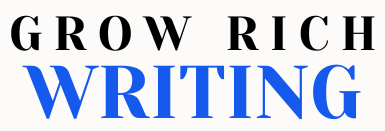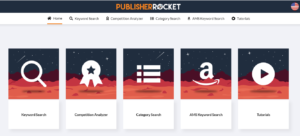Many authors want their books to be accessible to as many readers as possible. And one of the most important platforms for doing that is through Amazon KDP. However, when authors start asking questions like, “Is Amazon KDP expanded distribution worth it?”, it means they want to reach more readers with their books’ print copies.
While distributing ebooks is as easy as uploading ebook files to online retailers, there are many factors to distributing print copies since many authors want to distribute their print copies to brick-and-mortar bookstores and libraries. And one of the methods for reaching these distributors is through Amazon’s KDP expanded distribution.
What is KDP Expanded Distribution?
Amazon’s KDP expanded distribution allows you to reach more readers because it makes your books available to large distributors. It’s an option that allows you to relinquish rights to third-party distributors allowing them to sell your books to brick-and-mortar bookstores, online retailers, libraries, and academic institutions.
Please note, that Amazon KDP Print has standard distribution where your book will be available only on the Amazon store along with the ebook and audio formats of your book.
Expanded distribution is an extra platform that you can enroll your paperback (not hardcover) into as long as you’re a KDP publisher or self-publisher.
It’s free to enroll your book in KDP expanded distribution but you can only earn 40% royalties on books in expanded distribution.
40% royalties means you’ll earn = {Book Price} * {40%} – {Printing Costs}
Even though your profit per book on expanded distribution could be mere cents, you will still make some money whenever you sell a book.

Here are some of the requirements for enrolling your paperback in expanded distribution:
- Your paperback must be available on Amazon.com (Amazon US Marketplace) or Amazon.co.uk (the Amazon Uk marketplace) because expanded distribution is only available in those countries.
- Your paperback must have an ISBN (you can either buy one or get one assigned to you by KDP)
- Distributors don’t accept low-content books with blank pages or frequent lined pages, public domain content, poorly translated content, etc.
- Paperbacks published in Hebrew, Yiddish, and Japanese aren’t eligible for Expanded distributions.
- You must have distribution rights in the US to enroll in Expanded Distribution US. The same applies to the UK.
KDP expanded distribution Pros and Cons
Pros
- It is free and easy to enroll in expanded distribution. By ticking a box, you’re enrolled.
- If you’re not working hard on being wide or not wide and you’re concentrating mainly on building a group of loyal readers on Amazon, KDP expanded distribution might be a good way to try getting into the wide market.
Cons
- In case you don’t know, Amazon doesn’t play well with other parties in the book market. Because many of these retailers and bookstores see Amazon as competition, they are highly unlikely to order your book from Amazon even if you’re enrolled in expanded distribution.
- Amazon KDP expanded distribution offers trade discounts on your books that are not commercially viable to third-party distributors. So these third parties and book outlets are highly unlikely to buy and distribute your books because they may not be able to make enough profit selling your book at reasonable prices to readers.
- Brick-and-mortar stores and libraries are unlikely to order stock from Amazon because of the less favorable terms and the amount of paperwork involved.
- Amazon uses IngramSpark for your expanded distribution using your book’s ISBN. If you have the finances later in the future to pay for setting your book up via IngramSpark, you will have to contact both KDP and IngramSpark to get KDP to release that ISBN to you (and that may take a while). Instead of going through all this, there is a better option which I will talk about below.
Should I opt for Expanded distribution on KDP?
If you’re looking to diversify your income and want to sell your print books wide, then NO. Do not opt for Amazon KDP’s expanded distribution.
Instead, you should use Amazon KDP Print standard distribution and IngramSpark for expanded distribution.
Amazon KDP expanded distribution vs IngramSpark
This is how it works. IngramSpark, affiliated with Lightning Source, is the company that most third-party distributors and book wholesalers prefer to buy from. This means that Ingram has an extensive master distribution network for your print book and they play better with others, so they are a better bet for your expanded distribution.
Besides, most of the time, Amazon prints and distributes books via Ingram whenever their printers are backed up. Since you have the option to go directly through IngramSpark, then you should.
IngramSpark sends its catalog to a large network of book distributors and wholesalers which are trusted suppliers for book retailers, bookstores, libraries, and academic institutions to order books. So by publishing via IngramSpark, your book is available to buyers worldwide.
Although publishing your print books via IngramSpark doesn’t mean those bookstores or libraries will buy your books, if for any reason they discover your book they can easily buy it through Ingram. For example, if a storekeeper somehow discovers your book and wants to stock their bookstore with it, they are more likely to buy it via Ingram than with KDP expanded distribution.
With IngramSpark, you can also specify whether you will accept book returns or not which is something you can’t do with Amazon KDP expanded distribution.
Another difference between the KDP expanded distribution and IngramSpark is that while KDP expanded distribution is free for all uploads, you have to pay a $25 set-up fee revision fee every time you want to upload a new or revised cover or content to that book. There are several nuances to this so I’ll advise you to do your personal research on distributing your paperback via Ingram.
Of course, another advantage of IngramSpark is that you have the option to distribute hardcover and large print books, unlike with KDP expanded distribution.
How to use KDP Print and IngramSpark together
- IngramSpark allows you to sell Print books on pre-orders but KDP Print doesn’t. If you’re doing pre-orders on your ebook, then you should do the same for your Ingram Print books as well.
- I said before that Amazon doesn’t play well with other book stores so you’re better off publishing your book on Amazon KDP standard distribution using your Amazon bookshelf rather than distributing via Ingram. There are rumors that Amazon makes books published through Ingram to their platform less visible than books published directly on their platform.
- You can publish your print book on IngramSpark and Amazon at the same time using the same ISBN which you must buy. This way, Ingram will not distribute to Amazon on your behalf and you will not have two product pages for one book on Amazon. And even though you’re selling on preorder on Ingram, Amazon allows you to set a publication date too so you can publish well ahead of time so your book is already on Amazon’s platform if/when Ingram wants to distribute to them.
- Before clicking the publish button, order a proof copy from both Ingram and Amazon so you can spot any and all errors and correct them on time to avoid paying revision fees on Ingram. That’s why you should start uploading a print copy weeks/months before its publication date.
Final Thoughts
To summarize everything in this article, you’re better off distributing your print books via Amazon KDP Print standard distribution and IngramSpark.
I also want to give you some advice now. Please do not publish your ebook via IngramSpark. Other than the set-up fee, based on the feedback I’ve heard from other authors, it’s not worth it at all. You can publish your ebooks via Amazon KDP (DIRECT), Kobo, Barnes & Noble, and Apple books directly or using aggregators like Streetlib or Draft2Digital for platforms you can’t reach.










Helpful and informative. But in the final section of this piece, you said “This way, Ingram will **not** distribute to Amazon on your behalf and you will not have two product pages for one book on Amazon.”
Is that first **not** [my added emphasis] correct? Don’t you mean that Ingram WILL distribute to Amazon on your behalf…?
Actually, that’s kinda what I meant. I advocate for publishing your paperback directly on Amazon KDP. Since Ingram also distributes to Amazon, it’s important to upload the book onto Amazon and Ingram at the same time so you don’t have two product pages.